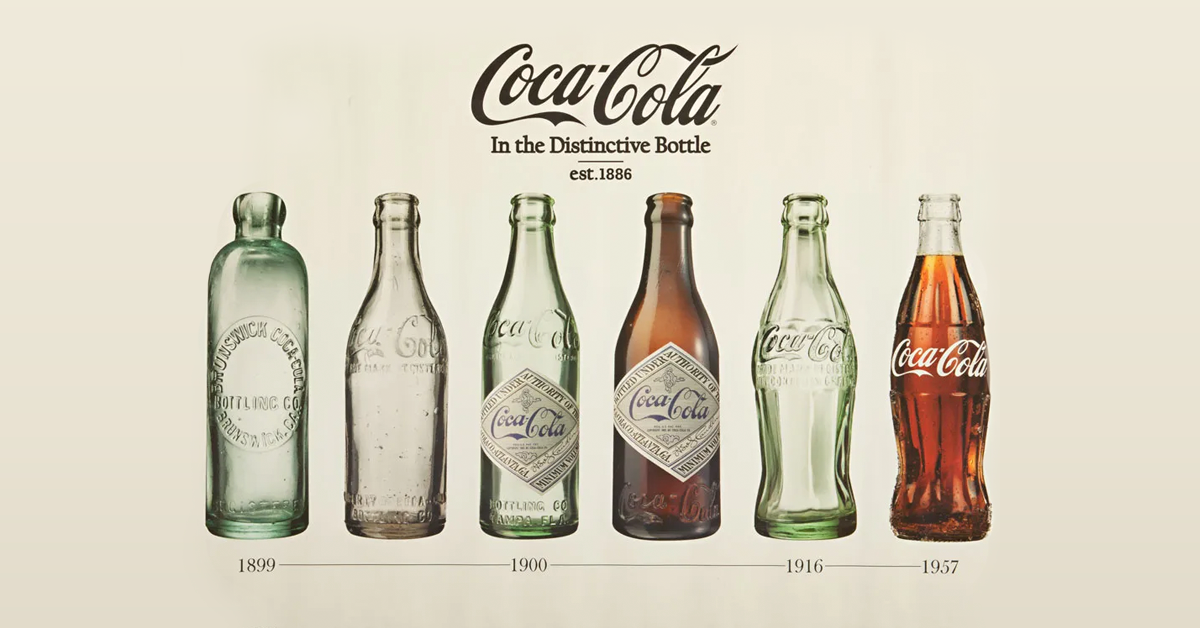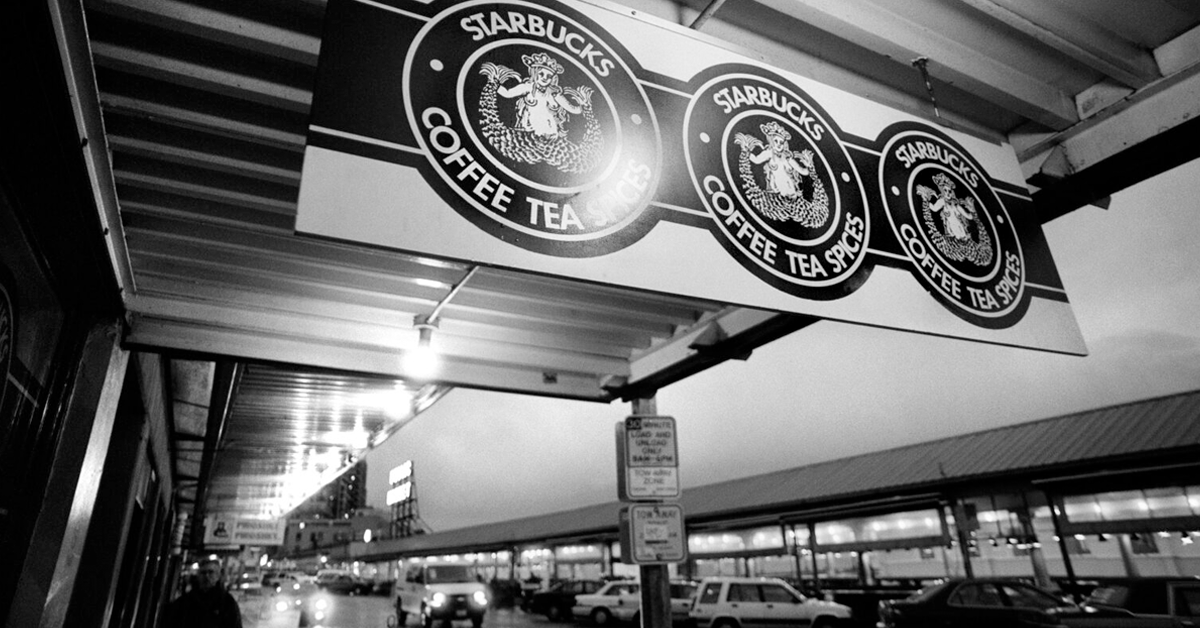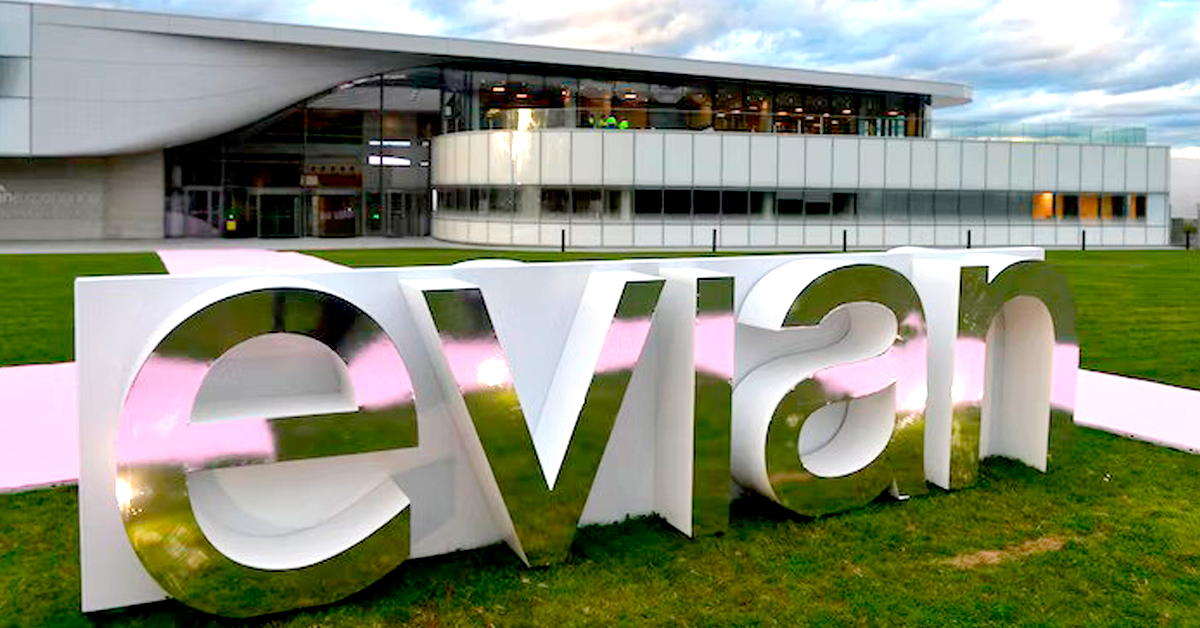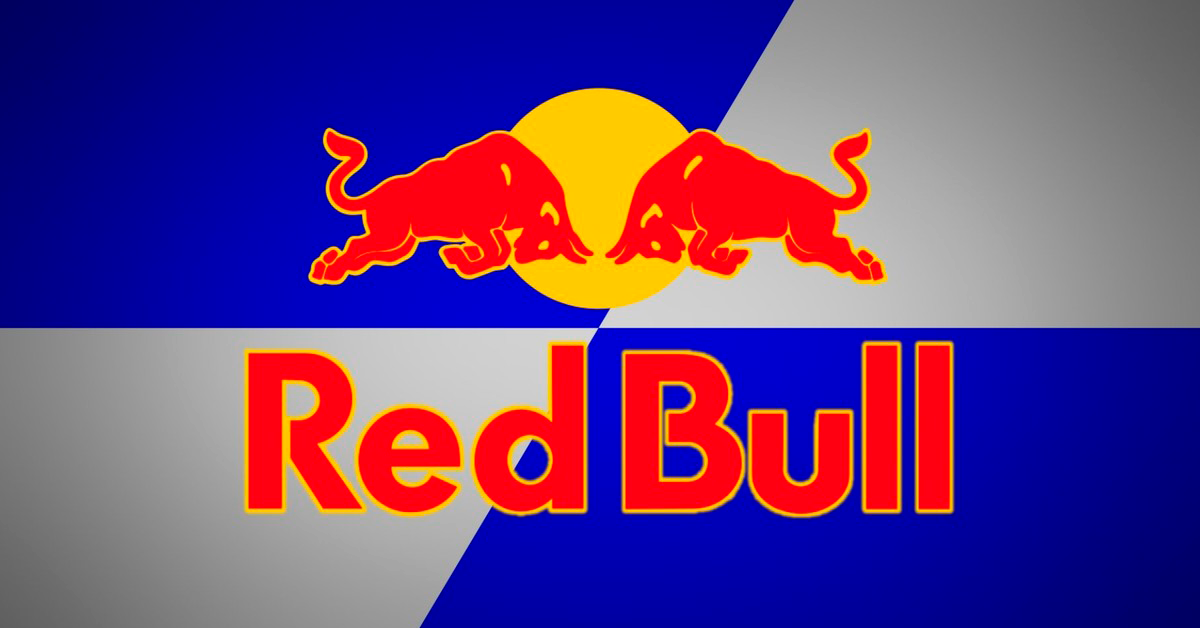Welcome to a journey through the captivating world of brand mastery, where four iconic giants – Coca-Cola, Starbucks, Evian, and Red Bull – have redefined excellence in their respective domains. Each of these iconic brands stands as a beacon of innovation, creativity, and strategic prowess, carving out unique identities that resonate across the globe. From the effervescent charm of Coca-Cola, a symbol of American culture and marketing genius, to the sophisticated allure of Starbucks, crafting a third place between home and work, these brands exemplify the art of transforming products into cultural phenomena.
Dive into the essence of Evian, the epitome of purity and luxury in bottled water, and feel the pulse of Red Bull, a brand that energizes not just its consumers but the very marketing landscape with its high-octane approach. As we unravel their stories, prepare to be inspired by how these brands have not only navigated the complex world of global markets but have become synonymous with innovation, lifestyle, and enduring success.

1. Coca-Cola
Historical Beginnings and Global Expansion
Coca-Cola, founded in the late 1800s in Atlanta, Georgia, by Dr. John Pemberton, rapidly evolved from a local drink to a national and eventually international phenomenon. Asa Candler, who acquired the company, significantly contributed to its expansion. By 1895, Coca-Cola had spread across the United States, and by the early 20th century, it began its global journey.
The first international export was to Cuba in 1899. During World War II, the company made a strategic move by supplying Coca-Cola to U.S. troops overseas, significantly boosting its international presence.
This global expansion strategy was further enhanced by its unique franchise distribution system, wherein the company produces syrup concentrate sold to bottlers worldwide, maintaining control over its secret recipe while leveraging local bottling operations. As of now, Coca-Cola operates in more than 200 countries and territories.
Advertising and Marketing with Digital Presence Branding
Coca-Cola’s advertising and marketing strategies have been a cornerstone of its branding success, with a substantial shift towards digital presence in recent years. Initially, the company invested heavily in traditional media advertising. Asa Candler’s early investment set a precedent for substantial marketing budgets, which has been a continuous trend.
Coca-Cola’s marketing campaigns have consistently focused on creating emotional connections, rather than solely promoting the product. This approach is evident in iconic campaigns like the 1971 “Hilltop” commercial, which emphasised global unity and camaraderie.
In the digital era, Coca-Cola has adeptly transitioned to online platforms, understanding the necessity of digital presence in contemporary marketing. The brand has leveraged social media, digital advertising, and interactive campaigns to engage with a wider, more tech-savvy audience.
This shift is not just about platform choice but also involves a strategic shift in content and engagement methods. Coca-Cola’s digital campaigns often focus on user engagement and interactivity, encouraging consumers to become part of the brand’s story.
For instance, the “Share a Coke” campaign, which started in Australia and spread globally, exemplifies this approach. By personalising Coke bottles with names, the campaign leveraged social media to encourage consumers to share their experiences online, thus creating a viral marketing phenomenon. This campaign was not only innovative but also showcased how digital platforms could be used to create a personal connection with consumers.
Coca-Cola’s digital marketing strategy also includes significant investment in analytics and data-driven marketing. The brand uses consumer data to tailor its online advertising, ensuring that its digital content is relevant and engaging to diverse audience segments. This approach allows Coca-Cola to remain a dominant player in the digital space, reaching younger demographics who spend significant time online.
Furthermore, Coca-Cola has embraced emerging digital trends like augmented reality (AR) and virtual reality (VR) to create immersive brand experiences. These technologies have enabled the brand to offer unique, engaging experiences that blur the line between digital and physical worlds, further enhancing the brand’s appeal to tech-savvy consumers.
Brand Identity and Endorsements with Digital Branding
Coca-Cola’s brand identity has been significantly bolstered by celebrity endorsements, which have evolved with the advent of digital branding. Historically, Coca-Cola has used endorsements from celebrities, athletes, and cultural icons to connect with various consumer demographics. These endorsements have ranged from musicians like Elvis Presley to athletes like Magic Johnson, all contributing to the brand’s broad appeal.
In the digital age, this strategy has expanded to include influencers and online personalities. Coca-Cola recognizes the power of social media influencers who have substantial followings and can sway public opinion. By partnering with these digital-age celebrities, Coca-Cola has been able to reach younger, digitally connected audiences more effectively.
Digital branding also allows for more interactive and engaging endorsement campaigns. Influencers and celebrities can use their platforms to create content that feels more personal and authentic, resonating strongly with followers. This approach is in stark contrast to traditional endorsement methods, where celebrities merely appeared in advertisements. Now, they can actively engage with the brand and their audience, creating a more dynamic and relatable brand image.
Additionally, Coca-Cola has utilized digital platforms to launch global campaigns that celebrities and influencers can easily amplify. Social media campaigns that encourage user participation, such as hashtag challenges or photo-sharing initiatives, often gain traction when endorsed by celebrities. This strategy not only increases the campaign’s reach but also adds an element of authenticity and relatability.
Coca-Cola’s digital presence is further strengthened by its responsiveness to current events and trends on social media. The brand often aligns its digital content with ongoing cultural conversations, making it relevant and timely. This approach ensures that Coca-Cola’s brand identity remains dynamic and in tune with the digital landscape’s fast-paced nature.
Coca-Cola’s foray into digital branding, particularly in advertising, marketing, and celebrity endorsements, demonstrates a strategic adaptation to the evolving digital landscape. The brand has successfully integrated traditional marketing strengths with modern digital tactics to maintain its status as a global marketing powerhouse.
Cultural Integration and Innovation
Coca-Cola’s success is deeply rooted in its ability to integrate itself into cultural narratives and significant events worldwide. The company has strategically aligned itself with music, movies, and major holidays like Christmas. This integration has been a key factor in making Coca-Cola a symbol of shared experiences and festivities.
For instance, the brand’s association with Christmas, featuring Santa Claus in advertisements since 1931, has become a seasonal icon. Moreover, Coca-Cola’s commitment to innovation, as seen in campaigns like “Share a Coke,” which personalized bottles with names, has helped the brand stay relevant and engaging.
Challenges and Responses
Coca-Cola has faced challenges concerning health and environmental impacts. With growing awareness of the health risks associated with sugary drinks, Coca-Cola has diversified its product portfolio to include sugar-free and reduced-calorie beverages. Additionally, the brand has expanded into healthier alternatives like coconut water.
Environmental criticism, particularly regarding plastic waste, has prompted Coca-Cola to adopt measures like lightweighting bottles and introducing plant-based “PlantBottle” packaging. Despite these efforts, the brand faces ongoing scrutiny over its environmental policies and the adequacy of its sustainability efforts.
Each of these points reflects the complexity and multifaceted nature of Coca-Cola’s brand evolution, highlighting its strategic marketing decisions, cultural integration, innovation, and responses to global challenges.

2. Starbucks
Brand Experience and Global Reach
Founded in 1971, Starbucks revolutionized the coffee-drinking experience, creating a unique “third place” concept between home and work. This concept was central to their branding, emphasizing a comfortable, inviting atmosphere where customers could relax and enjoy their coffee.
The company’s rapid global expansion started in 1996 with its first international store in Tokyo, and by 2019, Starbucks had over 30,000 stores in 80 countries.
Their strategy focused not just on opening stores, but on ensuring that each location delivered the consistent, high-quality experience that Starbucks is known for. This global reach, combined with a consistent and inviting brand experience, is a cornerstone of Starbucks’ success.
Customer Experience and Innovation
From its inception, Starbucks has been dedicated to providing a relaxing and enjoyable experience for customers. This focus on customer experience has been a key differentiator for the brand. Starbucks took a unique approach to understanding its customers, preferring informal interactions over structured surveys, enabling them to capture genuine feedback and mood.
They’ve successfully used market research to tailor their entry strategies into different countries, but their flexible approach to customer insights has been particularly effective in building their brand globally. This innovation in customer experience is a significant factor in their nearly five-decade-long resonance with customers.
Social Responsibility and Ethical Practices
Starbucks has built its brand on being a socially responsible and ethical company. This includes responsible purchasing practices, such as supporting farmer loans and forest conservation programs, and emphasising sustainability. Starbucks has also focused on creating opportunities through education, training, and employment.
For example, they source 99% of their coffee ethically, partner with environmental organisations, and publish annual social impact reports. Their commitment to reducing environmental footprints and supporting communities aligns with the values of many modern consumers, strengthening their brand appeal.
Brand Consistency and Local Adaptation
Starbucks has meticulously cultivated a brand that is both globally consistent and locally adaptive. The essence of Starbucks’ brand experience lies in creating a familiar, comfortable “third place” for customers, irrespective of geographical location. This means that whether you’re in a Starbucks in New York, Tokyo, or Moscow, you’ll encounter a similar ambiance and quality of service, a factor that greatly contributes to the brand’s global appeal.
The design of Starbucks stores is a prime example of this balance. Internationally, stores feature a standardized look and feel, with the iconic Starbucks Siren logo, comfortable seating, and a warm, inviting atmosphere. This consistency in design and experience fosters a sense of familiarity and comfort among customers globally. It reassures them of the same quality and experience they’ve come to expect from Starbucks, regardless of where they are.
However, Starbucks also recognises the importance of adapting to local cultures and preferences. This is evident in how they design some of their stores to reflect local architectural styles and cultural elements. For instance, in historical districts or culturally significant locations, Starbucks often designs stores that blend seamlessly with local aesthetics, respecting the heritage and traditions of the area.
This local adaptation not only respects the cultural sensitivities but also appeals to local customers who appreciate the recognition and incorporation of their culture.
Brand Equity and Value
Brand equity is a critical component in Starbucks’ success. It refers to the value of the Starbucks brand as perceived by customers, and it’s built on customer experiences, brand associations, and recognition. Starbucks’ brand equity is significantly high, primarily due to its strong customer relationships, global brand recognition, and consistent delivery of quality products and services.
The value of Starbucks’ brand also stems from its customer-centric approach. Their focus on creating a unique customer experience has not only led to high brand loyalty but also allowed Starbucks to maintain premium pricing. Customers are willing to pay more for Starbucks products because they associate the brand with a high-quality experience and strong ethical values, such as sustainable sourcing and social responsibility initiatives.
Design Philosophy
Starbucks’ design philosophy plays a crucial role in its brand equity. The design of their stores goes beyond aesthetics; it’s about creating an environment that enhances the customer experience. This involves a careful selection of materials, lighting, and layout that aligns with the brand’s identity of warmth, comfort, and community.
Innovation in design is also evident in how Starbucks has embraced sustainability in its store designs. The company has made significant efforts to incorporate eco-friendly materials and energy-efficient designs. This not only reinforces their commitment to environmental stewardship but also resonates with environmentally conscious consumers, further enhancing the brand’s value.
Moreover, Starbucks’ design strategy includes incorporating art and elements that reflect local culture and history, particularly in flagship stores. These stores often serve as a showcase of local craftsmanship and heritage, further enriching the customer experience and strengthening the connection between the brand and the local community.
In summary, Starbucks’ approach to brand consistency and local adaptation is a delicate balance that has significantly contributed to its global success. By maintaining a consistent brand identity while also embracing local cultures and preferences, Starbucks has created a unique brand experience that is globally recognised yet locally relevant.
This strategy, coupled with a strong focus on customer experience, ethical practices, and innovative design, has built significant brand equity and value, making Starbucks a leader in the global coffee industry.
Digital Engagement and Marketing Strategy
Starbucks Website as a Digital Presence
Starbucks’ website serves as a central digital hub for the brand. It’s not just a platform for e-commerce; it’s a comprehensive reflection of Starbucks’ brand identity, ethos, and customer engagement strategy. The website offers more than just product information; it provides a deep dive into the company’s sustainability initiatives, community involvement, and corporate news, thereby reinforcing its brand values.
Furthermore, the website facilitates the Starbucks Rewards program, which is integral to customer retention and personalised marketing efforts. This online presence allows Starbucks to connect with customers beyond the in-store experience, fostering a deeper brand connection.
Omnichannel Marketing
Starbucks excels in omnichannel marketing, providing a seamless customer experience across multiple channels, including in-store, online, mobile app, and social media platforms. Their mobile app, in particular, is a standout example of this strategy. It integrates mobile payment, loyalty rewards, and personalized offers, all while allowing customers to order ahead, thus reducing wait times.
This app is a key element in Starbucks’ omnichannel approach, merging convenience with a tailored customer experience. Through omnichannel marketing, Starbucks ensures that the customer journey is consistent and connected, regardless of the platform or medium through which the customer engages with the brand.
Social Media Engagement
Starbucks’ social media strategy is a critical component of its digital presence. With millions of followers across platforms like Facebook, Instagram, Twitter, and LinkedIn, Starbucks uses these channels to engage with customers, promote new products, and share its brand story.
Their social media content often includes interactive posts, such as quizzes and polls, encouraging customer participation and feedback. Starbucks also leverages user-generated content, reposting customer photos and stories, which not only enhances community engagement but also provides authentic content that resonates with their audience. Social media for Starbucks is more than just a marketing tool; it’s a platform for building a community and engaging in two-way conversations with customers.
Impact of Digital Engagement on Brand Success
Starbucks’ digital engagement has had a profound impact on its brand success. The integration of the website, mobile app, and social media has allowed Starbucks to gather valuable data on customer preferences and behaviors, which in turn informs their product development, marketing strategies, and even store locations. Their digital platforms also enable Starbucks to respond quickly to market trends and customer feedback, keeping the brand relevant and agile in a rapidly evolving market.
Challenges and Future Directions
Despite the success of Starbucks’ digital strategy, the brand faces challenges in an increasingly digital and competitive marketplace. With evolving consumer preferences, especially among younger demographics, Starbucks needs to continuously innovate its digital offerings to stay ahead. This might include exploring emerging technologies like augmented reality or enhancing their mobile app with more personalised features. Additionally, as digital platforms evolve, Starbucks must adapt its social media strategy to stay relevant on new and changing platforms.
In conclusion, Starbucks’ digital engagement and marketing strategy, encompassing a robust website, effective omnichannel marketing, and dynamic social media engagement, have been pivotal in solidifying its position as a leading global brand.
By seamlessly integrating these digital platforms into its overall business model, Starbucks has not only enhanced the customer experience but also ensured a consistent and engaging brand presence across all customer touchpoints. As the digital landscape continues to evolve, Starbucks’ ability to adapt and innovate within this space will be crucial in maintaining its market dominance and brand appeal.

3. Evian
Brand Value and Global Sales
Evian, a renowned mineral water brand owned by the French food-products group Danone, boasts a significant brand value of approximately $1.027 billion. This high valuation is a testament to its global appeal and presence, with the brand selling around 1.5 billion bottles annually in over 140 countries.
Evian’s success is not just a result of its product quality but also its continuous innovation and powerful, original communication strategies. These strategies have allowed Evian to stand out in the crowded mineral water market, maintaining a strong brand presence globally.
Historical Positioning and Communication
Evian’s branding journey began at the end of the 19th century when its water, sourced from a natural spring, was known for its “miraculous” healing properties and sold in pharmacies. By the mid-1930s, it was recommended for babies, leading to targeted campaigns towards mothers, midwives, and doctors.
In the 1950s, Evian expanded its communication to include a focus on health and introduced the theme of the Alps. This historical positioning laid a strong foundation for the brand, emphasizing its health benefits and aligning it with purity and natural quality.
Innovative Advertising Campaigns
Evian’s innovative advertising campaigns have been central to its brand identity and success. The brand’s most iconic campaign, “Water Babies,” launched in 1998, featured babies swimming in synchrony, symbolizing youth and vitality. This campaign was not only a creative marvel but also struck a chord with the audience, evidenced by its high approval and recognition scores in France. It firmly implanted Evian’s brand image as one associated with youth and purity.
The subsequent “Roller Babies” campaign took this concept further. Launched in response to the need for a more unified global brand communication, this campaign featured babies on roller skates performing impressive stunts to funky music.
This advertisement broke records, becoming one of the most-watched ads on YouTube, with over 254 million views. It held a Guinness World Record and was recognised as one of the most effective ads by Time Magazine, Wall Street Journal, and The Guardian.
Its success marked a significant shift in Evian’s advertising strategy, moving from health and purity to a broader, more inclusive message of “Live Young.” This campaign demonstrated Evian’s ability to adapt its message for a global audience while maintaining its upscale image.
Another campaign, “Baby & Me” launched in 2013, continued this theme. It used a mirrored dancing concept between adults and their baby counterparts, underlining the “Live Young” slogan. This campaign allowed consumers to connect with their inner child, reinforcing the brand’s promise of youthfulness and vitality.
The consistent theme in Evian’s advertising is the focus on youth, health, and vitality, which aligns with the product’s natural purity and quality. These campaigns have significantly influenced consumer perception, positioning Evian as a premium, health-oriented brand. The creative approach in these ads also sets Evian apart from its competitors, giving it a unique space in the mineral water market.
The outcome of these campaigns for Evian’s brand has been overwhelmingly positive. They have helped in building a strong brand recall and association with positive qualities like youth and health. These campaigns have also contributed to Evian’s global brand recognition, making it one of the most famous mineral water brands in the world.
Digital and Traditional Media Strategy
Evian’s digital and traditional media strategy plays a crucial role in its brand success. The brand has skillfully blended its online presence with impactful traditional media campaigns to create a comprehensive marketing strategy.
Digital Strategy and Social Media Presence
Evian’s digital strategy is robust, leveraging the power of the internet for precise targeting and extensive reach. The brand’s social media presence is a key component of this strategy, with active profiles on platforms like Facebook, Instagram, and Twitter. These platforms are used to engage with consumers, share brand stories, and promote new campaigns. For example, the “Live Young” campaign was heavily promoted on social media, resulting in increased engagement and sharing among users.
In addition to social media, Evian has capitalised on digital innovations like augmented reality and interactive online ads to create immersive brand experiences. These innovative digital campaigns not only engage consumers but also reinforce Evian’s image as a modern and forward-thinking brand.
E-commerce Website
Evian’s e-commerce website is another pillar of its digital strategy.The website not only serves as a platform for online sales but also as a brand-building tool. It offers detailed product information, highlights the brand’s commitment to sustainability, and provides a seamless shopping experience. The integration of the website with Evian’s broader digital strategy ensures a cohesive brand message across all online touchpoints.
Traditional Media Strategy
While focusing on digital, Evian has not neglected traditional media. The brand has been known for its visually appealing print ads and outdoor campaigns. Limited edition bottles designed by famous designers and artists have become collectibles, further enhancing the brand’s premium image.
Evian’s involvement in sponsoring major events like the Women’s Golf Open Championship and Wimbledon tennis tournament, as well as its presence in fashion shows, extends its reach beyond the digital realm. These sponsorships align with the brand’s values and target audience, providing visibility in high-profile, relevant settings.
Integration of Digital and Traditional Media
The integration of digital and traditional media is a key strength of Evian’s strategy. The brand ensures that its messaging is consistent across all platforms, whether it’s an Instagram post, a YouTube ad, or a billboard. This integrated approach helps in building a cohesive brand image and ensures that Evian remains relevant and engaging across different consumer touchpoints.
Evian’s digital and traditional media strategy is a well-balanced mix of innovative digital tactics and impactful traditional campaigns. This strategy has not only helped Evian in maintaining a strong market presence but also in resonating with a modern, health-conscious consumer base.
Environmental Commitment
Evian is dedicated to environmental protection, aligning its brand values with sustainability and social responsibility. The brand has initiated schools of water to help manage water resources sustainably and developed partnerships with organizations like the Red Cross.
These efforts in environmental protection and health, especially in pediatrics, reflect Evian’s commitment beyond just selling mineral water. This commitment not only bolsters its brand image but also resonates with consumers who are increasingly concerned about the environmental and social impacts of the products they choose.
Evian’s branding success is a harmonious blend of historical positioning, innovative marketing, effective use of media, and a strong commitment to environmental and social issues, all contributing to its prestigious standing in the global market.

4. Red Bull
Unique History and Market Positioning
Red Bull’s journey began in Thailand in 1976 when Chaleo Yoovidhya created Krating Daeng, a drink popular among blue-collar workers and truck drivers. In 1982, Austrian Dietrich Mateschitz discovered the drink while looking to overcome jet lag and saw its potential in the European market.
In 1984, Mateschitz and Yoovidhya co-founded Red Bull GmbH, each investing $500,000 and holding 49% of the shares, while the remaining 2% went to Yoovidhya’s son, Chalerm. Mateschitz’s leadership and vision played a crucial role in transforming Red Bull into a global brand.
Target Market and Global Strategy, Brand Power, and Symbol Impact
Red Bull’s target market, encompassing young adults aged 15-45, is strategically chosen to align with the brand’s image of vitality, adventure, and endurance. This demographic is generally characterised by high energy levels, a penchant for adventure, and a lifestyle that values quick, effective solutions, aligning perfectly with Red Bull’s product offering and brand ethos.
The brand’s messaging and marketing strategies are meticulously tailored to resonate with this audience’s aspirations and lifestyle preferences.
The Power of Branding
Red Bull’s brand power lies in its ability to create a unique identity that goes beyond just being an energy drink. It has established itself as a symbol of energy, adventure, and peak performance. This strong brand identity is supported by consistent and impactful marketing campaigns that blend with the lifestyle and aspirations of its target audience.
Red Bull’s branding strategy is not just about selling a product; it’s about selling an experience, an attitude, and a way of life that appeals to its dynamic consumer base.
Symbol Impact and Global Strategy
Red Bull’s brand power lies in its ability to create a unique identity that goes beyond just being an energy drink. It has established itself as a symbol of energy, adventure, and peak performance. This strong brand identity is supported by consistent and impactful marketing campaigns that blend with the lifestyle and aspirations of its target audience.
Red Bull’s branding strategy is no secret and it’s not just about selling a product; it’s about selling an experience, an attitude, and a way of life that appeals to its dynamic consumer base.
Digital Marketing, Online Presence, Website, and E-commerce
Red Bull’s digital marketing strategies play a pivotal role in its branding success. The company has effectively harnessed the power of digital platforms to engage with its target audience, disseminate its brand message, and drive sales.
Digital Marketing and Online Presence
Red Bull’s digital marketing strategy is multifaceted, involving social media engagement, content marketing, and interactive campaigns. The brand’s social media presence is significant, with active accounts across multiple platforms including Facebook, Instagram, Twitter, and YouTube.
These platforms are used not only to promote products but also to share engaging content that aligns with the interests of its audience, such as extreme sports, music festivals, and adventure-related activities.
Website and Content Strategy
Red Bull’s website is a hub of engaging content that goes beyond product promotion. It features articles, videos, and features on a variety of topics such as sports, culture, and lifestyle, all of which align with the brand’s identity. This content strategy helps in building a deeper connection with the audience, reinforcing the brand’s image as a lifestyle enhancer.
E-commerce Strategy
Red Bull’s e-commerce strategy is seamlessly integrated into its digital presence. The website not only offers the convenience of purchasing Red Bull products online but also sells branded merchandise. This strategy not only drives direct sales but also enhances brand visibility and loyalty among its consumer base.
Soccer Team Sponsorships
Red Bull’s involvement in sports sponsorship, especially in soccer, is a significant aspect of its marketing strategy. The company owns and sponsors several soccer teams, each carrying the Red Bull brand name. These teams include:
RB Leipzig (Germany): Established in 2009, RB Leipzig has quickly risen through the ranks in German football, becoming one of the prominent teams in the Bundesliga.
Red Bull Salzburg (Austria): This team has been one of the most successful clubs in Austrian football, consistently participating in European competitions.
New York Red Bulls (USA): Competing in Major League Soccer (MLS), the New York Red Bulls have become a well-known name in American soccer, attracting both local and international talents.
Red Bull Bragantino (Brazil): Formerly known as Clube Atlético Bragantino, this team was acquired by Red Bull in 2019 and has since been rebranded to Red Bull Bragantino.
Each of these teams not only serves as a platform for promoting the Red Bull brand but also aligns with the company’s broader marketing goals of associating with high-energy, dynamic, and youth-oriented sports. This strategy has not only bolstered Red Bull’s brand visibility but also demonstrated its commitment to supporting and developing sporting talent globally.
Innovative Promotions
Red Bull’s innovative promotional tactics set it apart in the energy drink market. For example, in 2009, Red Bull created a dedicated in-game island on PlayStation Home to promote its energy drink and the Red Bull Air Race series. The brand’s sports sponsorship activities focus on supporting talented young athletes across various disciplines.
The Red Bull Junior program in motorsports is particularly prominent, producing notable athletes like Sebastian Vettel and Daniel Ricciardo. Such initiatives not only promote the brand but also help nurture the next generation of sports talent.
These strategies combined have enabled Red Bull to not only create but also dominate a niche in the energy drink market, making it a symbol of high energy and performance.
5. Final Thoughts
Coca-Cola, Starbucks, Evian, and Red Bull have each carved out distinct spaces in the F&B industry through innovative strategies. Coca-Cola’s success lies in its historical roots, expansive global presence, and emotive marketing that intertwines with cultural moments.
Starbucks redefined the coffee experience, emphasizing customer experience, ethical practices, and local adaptations while maintaining brand consistency. Evian stands out for its health-focused branding and innovative advertising, whereas Red Bull’s dynamic approach includes targeting young, active consumers and leveraging extreme sports sponsorships.
F&B businesses can adopt these strategies by focusing on brand identity and experience, like Coca-Cola and Starbucks. Emphasizing unique brand stories and cultural connections can create emotional resonance with consumers.
Like Evian, businesses can innovate in advertising to differentiate their products. Red Bull’s approach to targeting specific consumer demographics and creating a lifestyle brand around their product can be particularly effective in today’s market.
Incorporating digital strategies is crucial. Engaging a digital marketing partner like WDD Malaysia, specializing in brand communication through website design strategy, can help in crafting an online presence that resonates with target audiences. A well-designed website and effective online marketing can enhance brand visibility, engagement, and consumer loyalty, essential for success in the contemporary F&B industry.




